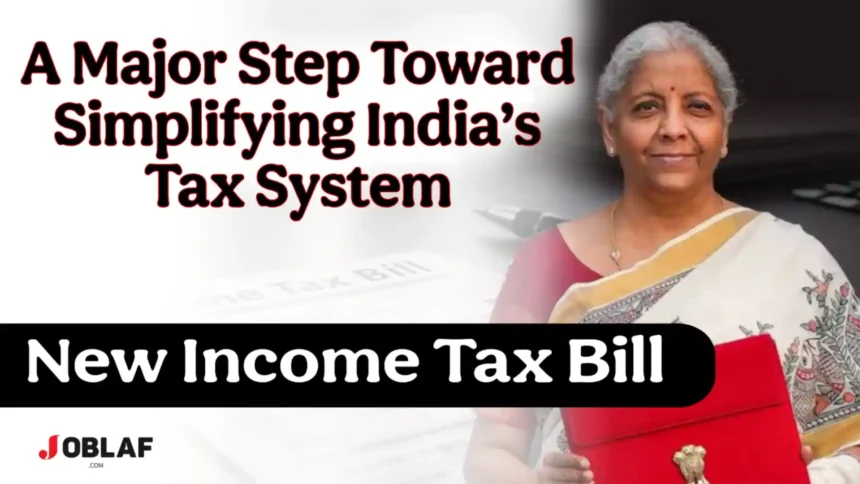The Indian government has introduced the New Income Tax Bill, aiming to modernize and simplify the country’s tax system. The existing Income Tax Act of 1961 has undergone multiple amendments over the past six decades, making its provisions complex and difficult to interpret. As a result, tax disputes and prolonged litigation have increased significantly.
To address these challenges, the Finance Minister, in the July 2024 Budget speech, announced a comprehensive review of the 1961 Act. This initiative was spearheaded by the Central Board of Direct Taxes (CBDT), which formed 22 specialized sub-committees to analyze various aspects of the current law. Additionally, public feedback was solicited, leading to over 6,500 suggestions being considered in drafting the new law.
Key Features of the New Income Tax Bill
The New Income Tax Bill, 2025, was approved by the Union Cabinet on February 7 and introduced in Lok Sabha today. Spanning 622 pages, it comprises 23 chapters, 16 schedules, and 536 clauses. Compared to the 1961 Act, which had 823 pages, the new bill is 24% shorter, making it more concise and easier to understand.
1. Key Terminology Changes
One of the fundamental changes in the bill is the replacement of certain terms to make tax laws clearer:
- The term “previous year” has been replaced with “tax year.”
- The concept of “assessment year” has been eliminated.
- The tax year will still run from April 1 to March 31.
2. Improved Tax Administration
The CBDT will now have increased authority to establish tax administration rules, implement compliance measures, and enforce digital tax monitoring systems. This will reduce the need for frequent legislative amendments, streamlining tax governance.
3. Simplified Language and Structure
The bill moves away from complicated legal jargon, making it more accessible for taxpayers. Additionally:
- Explanations and provisos have been removed to enhance clarity.
- Tables summarizing TDS rates and incomes subject to special tax rates have been introduced.
- Salary deductions and exemptions are now presented in a tabular format.
- Formula-based calculations, such as those for Written Down Value (WDV), have been incorporated to simplify tax computations.
Most Read: Retirement Age Hike: Govt Increases Retirement Age for Specialist Doctors to 65 Years
Impact of the New Income Tax Bill
The New Income Tax Bill marks a significant milestone in India’s tax reforms. With a “trust first, scrutinize later” approach, it aims to reduce unnecessary compliance burdens while ensuring tax transparency. By prioritizing ease of navigation and clarity, the bill aligns with the government’s philosophy of “minimum government, maximum governance.”
Set to take effect on April 1, 2026, the bill is expected to enhance efficiency, minimize tax disputes, and foster a more taxpayer-friendly environment. However, before its final implementation, it will be reviewed by Parliament’s Standing Committee on Finance.
Conclusion
The introduction of the New Income Tax Bill is a crucial step toward a modern, transparent, and simplified tax system. By eliminating ambiguity and making tax laws more accessible, it will provide taxpayers with greater confidence and reduce litigation risks. As India moves toward a more efficient tax structure, this bill promises a streamlined, technology-driven, and user-friendly tax environment for all.
Stay tuned for further updates as the bill progresses through the parliamentary review process.






